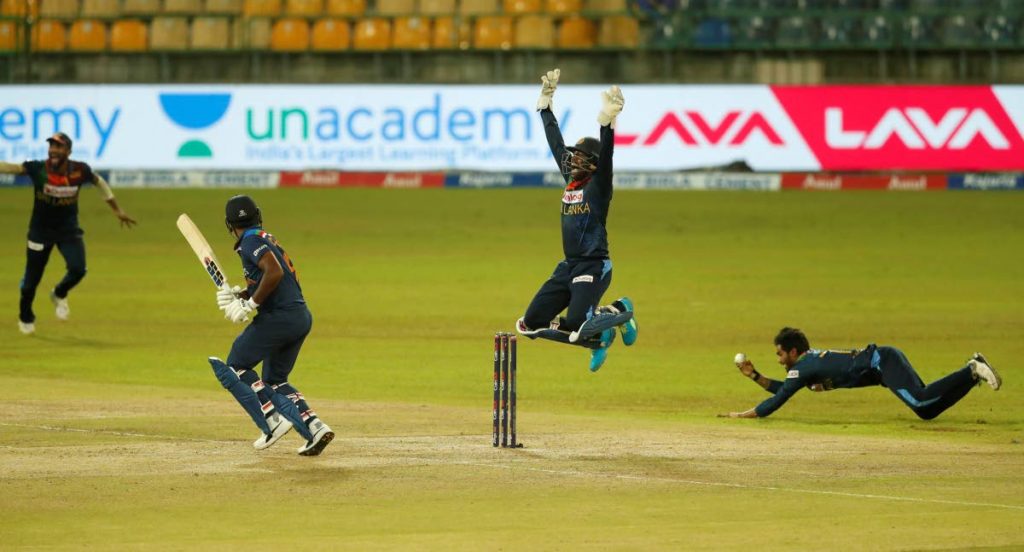International cricket is a dog-eat-dog atmosphere

BRYAN DAVIS
CRICKET IS a tough taskmaster! At the top of the heap in international cricket where teams are giving of their best for their country, they neither give nor ask for any favours! It’s a dog-eat-dog atmosphere and the devil takes the hindmost! You witness it in the bowlers’ and fieldsmen’s appeals to the umpire.
You notice it in the celebrations when a wicket falls; and one of the main reasons for this is just how tough the game is, when millions are looking at their tv sets, noticing every little mistake or each wonderful effort. Especially in cricket which, although a team sport, highlights the individual very often. The focus is on the player and good or bad, the play is repeated over and over again!
Think of it! How lonely is that batsman walking out to bat from the pavilion with zero showing next to his name on the scoreboard. He alone has to face up to the bowler who has just claimed a wicket. Or if he has a partner with him because he’s an opening batsman, the realisation that there are no runs on the board and he can start a crisis in the innings or not!
The bowler, on his own, is well aware that all eyes are on him to see whether he will bowl a bad ball or a good one. Then the fielder trying to cut off the boundary or eyes glued on the ball that seems to be a million miles in the air, the world and all his countrymen waiting anxiously to observe either a dropped catch or a well-taken one. The wicketkeeper in the game for every ball bowled by the fielding team, knowing that he’s only noticed when he makes a mistake.
Yes, a tough game indeed. The burden of expectation is a lot to bear. The pitch is the essence of the sport. It’s a 22-yard strip of turf on which the action takes place, bat against ball. The type of surface on which the game is played is prepared by the groundsstaff at the venue in which the contest is taking place. No two pitches are alike, thankfully.

Of course, they may possess a similar soil content, but this would change from country to country, however, every head groundsman has his own skill and method of preparation. It is more of an art form than a science. And this is where the glory of the game lies throughout the world, in the variety of pitches on which to play cricket.
The professional cricketer ought not to complain of the various pitches he encounters. Once upon a time there was no covering of pitches which is a must in the present day. As cricket evolved there was improvement of pitches, to ensure fairer games. Finance played a big part in this definition, especially in club cricket, where clubs could not afford the covers or the staff required to put them in place in case of rain or at close of play.
Many methods of preparation are used but the elements of weather, availability of the proper grass, an adequate supply of water, the possession of rollers with different weights, knowing when and how long to roll, the length of preparation time for the format of the game, all this and more, is needed to settle on a pitch that would have a fair game of cricket, producing a balance between bat and ball.
The cricketer arrives at the ground and usually inspects the pitch to see what he can read into it to give his team an advantage. Regardless of the type of pitch with which he’s confronted, one thing is certain and that is, both teams have to bat on the same pitch. In limited-overs cricket, because of the intention of its being, – and that was to bring more people to the ground to watch cricket – the authorities asked the head groundsman to prepare pitches that batsmen could score comfortably on, so that teams would not be bowled out cheaply.
However, as I mentioned earlier, there are many intricacies involved in the pitch preparation, so the wicket (to give it its popular name) would not always be the same. True professional cricketers therefore, who truly love the game, would accept the contest without complaint, knowing that both teams have to use the same wicket which would hardly change in a limited-overs fixture. The side with more determination, skill and the right attitude would always prosper.

Comments
"International cricket is a dog-eat-dog atmosphere"